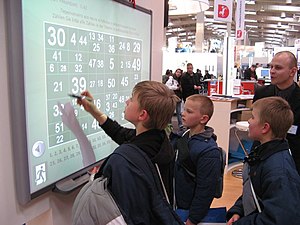Although I was thrown a whole bunch by not having wifi for the first 45 minutes, I think that the session was worthwhile. Here is the archive of all that we have done. I am also including my planning podcast from my drive up to copper mountain.
Presentation:
Drop Box:
Important Links:
Ben Wilkoff Links:
- Learning is Change Blog and Podcast>
- Twitter Page
- Other Presentation on Thursday (The On Button: Instant and Always-on Collaboration)
Presentation Links:
Exit Plan for Vocaroo:
- Wav files backed up to a hard drive/server
Exit Plan for Drop.io:
- Everyone who downloads the podcast will have a copy.
Exit Plan for JamGlue:
- Mp3 files of mixes
Exit Plan for Screencastle:
- Download Direct Link to File and store on hard drive/server
Exit Plan for Screentoaster:
- Mov Downloads before uploading to screencastle site
Exit Plan for DimDim:
- Download and build own DimDim server and store recordings there.
Exit Plan for Twitter:
- Backup twitter with Tweettake
Exit Plan for Google Docs:
Ustream Archive:
Twitter Archive:
Jun 23, 2009 09:46 PM GMT ·
from TweetDeck
·
Reply
· View Tweet
Jun 23, 2009 09:40 PM GMT ·
from web
·
Reply
· View Tweet
Jun 23, 2009 09:13 PM GMT ·
from web
·
Reply
· View Tweet
Jun 23, 2009 09:08 PM GMT ·
from web
·
Reply
· View Tweet
Jun 23, 2009 09:05 PM GMT ·
from Nambu
·
Reply
· View Tweet
Jun 23, 2009 08:40 PM GMT ·
from twhirl
·
Reply
· View Tweet
Jun 23, 2009 08:19 PM GMT ·
from TweetGrid
·
Reply
· View Tweet
Jun 23, 2009 08:13 PM GMT ·
from TweetGrid
·
Reply
· View Tweet
#forevertie09Jun 23, 2009 08:13 PM GMT ·
from TweetGrid
·
Reply
· View Tweet
Jun 23, 2009 08:12 PM GMT ·
from web
·
Reply
· View Tweet
Jun 23, 2009 08:11 PM GMT ·
from TweetGrid
·
Reply
· View Tweet
Jun 23, 2009 08:08 PM GMT ·
from twhirl
·
Reply
· View Tweet
Jun 23, 2009 08:08 PM GMT ·
from TweetDeck
·
Reply
· View Tweet
Jun 23, 2009 08:08 PM GMT ·
from web
·
Reply
· View Tweet
Jun 23, 2009 08:08 PM GMT ·
from web
·
Reply
· View TweetJun 23, 2009 08:08 PM GMT ·
from web
·
Reply
· View Tweet
Jun 23, 2009 08:08 PM GMT ·
from web
·
Reply
· View Tweet
Jun 23, 2009 08:08 PM GMT ·
from TweetDeck
·
Reply
· View Tweet
Jun 23, 2009 08:07 PM GMT ·
from web
·
Reply
· View Tweet
Jun 23, 2009 08:03 PM GMT ·
from TweetDeck
·
Reply
· View Tweet
Jun 23, 2009 08:00 PM GMT ·
from txt
·
Reply
· View Tweet
Jun 23, 2009 07:54 PM GMT ·
from TweetGrid
·
Reply
· View Tweet
Jun 23, 2009 07:54 PM GMT ·
from TweetGrid
·
Reply
· View Tweet
Jun 23, 2009 07:51 PM GMT ·
from TweetDeck
·
Reply
· View Tweet
Jun 23, 2009 07:50 PM GMT ·
from web
·
Reply
· View Tweet
Jun 23, 2009 07:47 PM GMT ·
from web
·
Reply
· View Tweet
Jun 23, 2009 07:39 PM GMT ·
from TwitterGadget
·
Reply
· View Tweet
Jun 23, 2009 07:31 PM GMT ·
from TweetDeck
·
Reply
· View Tweet
Jun 23, 2009 07:29 PM GMT ·
from TweetDeck
·
Reply
· View Tweet
·Show ConversationHide Conversation
Jun 23, 2009 07:29 PM GMT ·
from web
·
Reply
· View TweetJun 23, 2009 07:28 PM GMT ·
from web
·
Reply
· View Tweet
·Show ConversationHide Conversation
Jun 23, 2009 07:27 PM GMT ·
from TweetDeck
·
Reply
· View Tweet
·Show ConversationHide Conversation
Jun 23, 2009 07:25 PM GMT ·
from TweetDeck
·
Reply
· View Tweet
Jun 23, 2009 07:23 PM GMT ·
from web
·
Reply
· View Tweet
Jun 23, 2009 07:22 PM GMT ·
from TweetDeck
·
Reply
· View Tweet
·Show ConversationHide Conversation
Jun 23, 2009 07:22 PM GMT ·
from web
·
Reply
· View Tweet
·Show ConversationHide Conversation
Jun 23, 2009 07:20 PM GMT ·
from TwitterFon
·
Reply
· View Tweet
Jun 23, 2009 07:20 PM GMT ·
from TweetDeck
·
Reply
· View Tweet
Jun 23, 2009 07:20 PM GMT ·
from Twitterrific
·
Reply
· View Tweet
Jun 23, 2009 07:19 PM GMT ·
from Nambu
·
Reply
· View Tweet
Jun 23, 2009 07:10 PM GMT ·
from TweetDeck
·
Reply
· View Tweet
·Show ConversationHide Conversation
Jun 23, 2009 07:09 PM GMT ·
from TweetDeck
·
Reply
· View Tweet
Jun 23, 2009 10:53 AM GMT ·
from twhirl
·
Reply
· View Tweet
Jun 23, 2009 05:55 AM GMT ·
from Nambu
·
Reply
· View Tweet
Jun 23, 2009 05:54 AM GMT ·
from Nambu
·
Reply
· View Tweet
Podcast: Play in new window | Download
Subscribe: RSS






 )
)










![Reblog this post [with Zemanta]](https://i0.wp.com/img.zemanta.com/reblog_e.png?w=1225)





